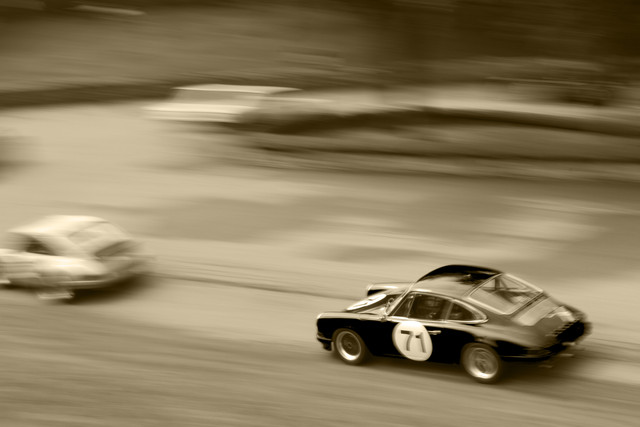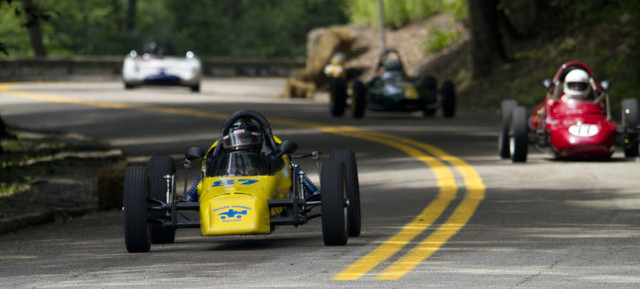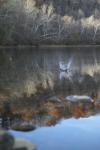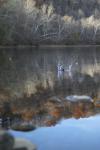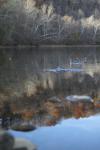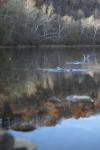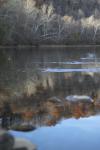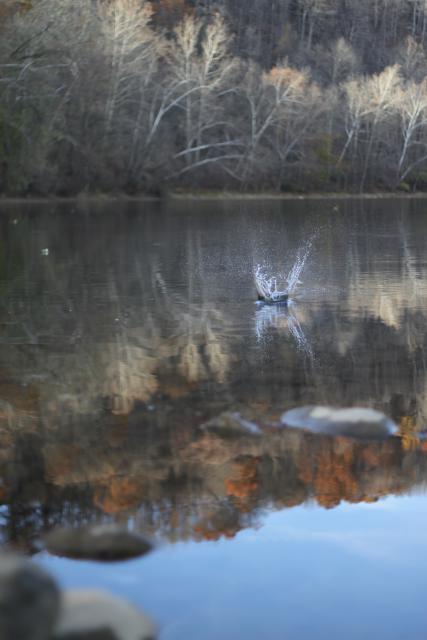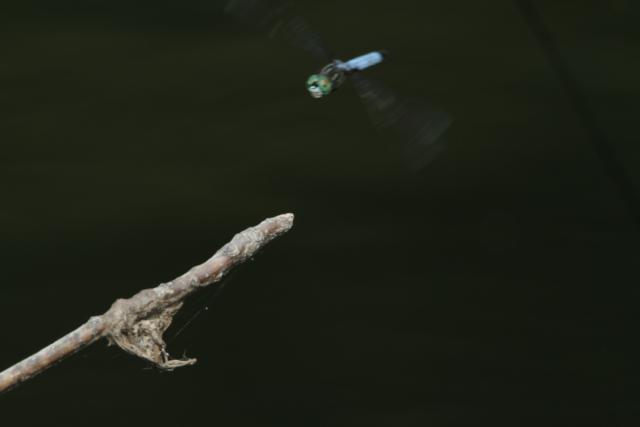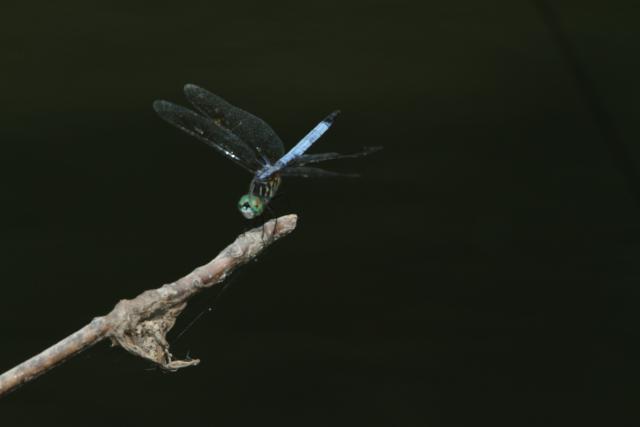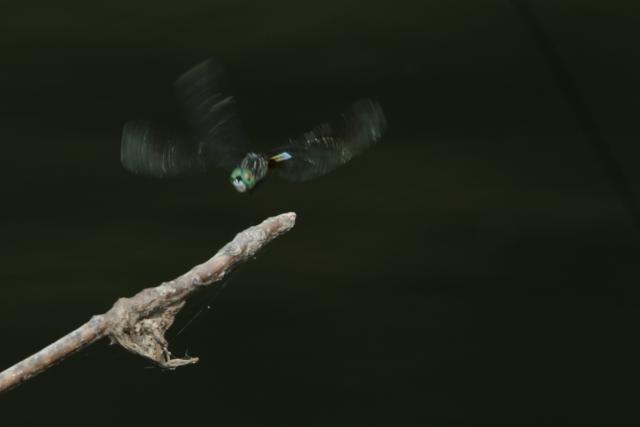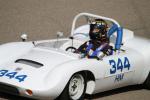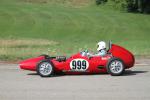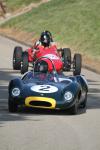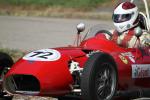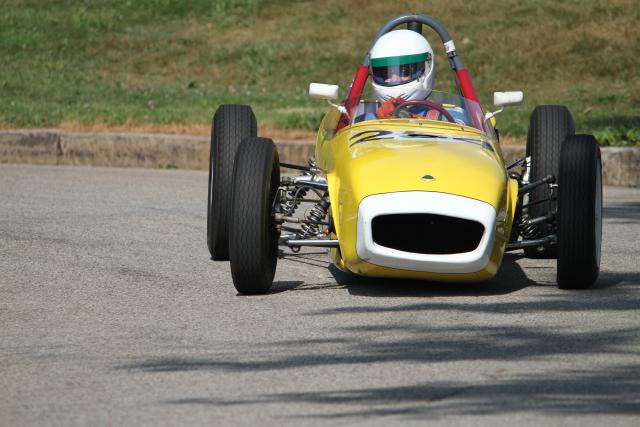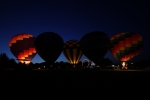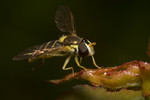action
PVGP 2011 (part 2)
ktuli — Wed, 07/27/2011 - 21:02
So one of the things I went into this year's Vintage Grand Prix hoping to accomplish is some panning shots. Basically, you keep one of the cars in the same spot within the view finder as you track along with the car as it moves. Doing this produces a blurred background with a sharp in focus car. The blurred background generally will have a streaked appearance, giving the sense of speed and motion. It is much easier said (and typed) than done!
I took probably at least 200 photos, and only got a couple that were worth keeping - and even those are a bit blurry and probably should be deleted... but for a first attempt, I figured they were good enough. And in one case, I used a sepia tone treatment to give it an even more vintage look (and to hide some flaws).
Technical Details: Canon EOS 7D, Canon EF 50mm f/1.8 II, 1/10 at f/22. ISO 100. 2011 Pittsburgh Vintage Grand Prix, Pittsburgh, PA. Raw conversion and sepia tone conversion in Photoshop CS5 (mouseover for original).
Obviously, unless all of the cars are moving at the exact same speed, only one will be in focus. In this case, I was focusing on the red 71 car. If you look closely at the 71 on the door, you'll see it is a bit blurred, and other parts of the car are not as crisp as I would have liked. This either means I panned too quickly, too slowly, and/or moved the camera up/down.
I think I chose a poor location to try this... as the cars would enter the turn, they would change speeds - making it much more difficult to pan at the right speed. It also produced a rather cluttered and confusing background.
But all in all, I still like the shot - despite its flaws, it was a good learning experience, it has a fun feel too it, and I enjoyed capturing it.
- Bill
PVGP 2011 (part 1)
ktuli — Wed, 07/27/2011 - 06:36
Ok! As promised, we'll take a break from the spiders and bugs for a bit and check out some classic cars. Like last year I took a trip to the Pittsburgh Vintage Grand Prix. Hopefully this year's shots meet your approval...
Technical Details: Canon EOS 7D, Sigma 150-500mm f/5-6.3 APO DG OS HSM at 289mm, 1/320 at f/6.4. ISO 100. 2011 Pittsburgh Vintage Grand Prix, Pittsburgh, PA. Raw conversion and cropped in Photoshop CS5 (mouseover for original)
Why This Photo: I took shots from this vantage point last year too, and I really liked the way you could get multiple cars lined up in the shot. It obviously requires a little luck and patience and good timing.
What Works: The relatively shallow DoF allows for the main car to be in focus while the others are blurred. Additionally, the placement of the cars provides balance to the shot, while the curve of the road produces a pleasing smooth line to lead the viewer's eyes through the scene.
What Doesn't Work: Obviously, in the original, the over-exposed pavement at the foreground was very distracting. It really served no purpose, but as you can see, was very easy to eliminate. The exposure through the shade of the trees on that section of road is always a little tough. Additionally, the front tire of the red car is breaking the edge of the frame, and probably would have been better suited had it been given a little space there.
Stay tuned as I have a bunch of shots to share from the races and the car show... plus, in a rare twist for me, you'll see a bit more post processing - including some B&W and Sepia.
- Bill
Skipping Stones Sequence
ktuli — Fri, 11/19/2010 - 07:51
I don't feel much like typing much again today, so you get to benefit by getting to look at photos without a bunch of blabbering on and on.
Just mouse of the thumbnails to see the larger image.
Technical Data: Canon EOS 7D, Canon EF 50mm f/1.8 II, 1/1580 sec at f/1.8, ISO 200. Dolica AX620B100 tripod. Satechi TR-A Timer Remote Control Shutter Release. No post production. Cedar Creek Park, Westmoreland County, PA.
Enjoy.
- Bill
Skipping Stones
ktuli — Mon, 11/15/2010 - 20:30
I know I've tried today's photo once before, but apparently I did not get very good results because I can't find any photos from the previous attempt, and to be honest, this most recent attempt yielded similarly poor results. So before we even get started, you can know that this is something I'll try again someday.
I am talking about capturing a photo of a flat sheet of water, with a nice reflection, and one or more splash of a skipping stone. I honestly can't remember why the last set did not work out, but when I tried the other day, I figured I would give the 7D's 8 fps shooting speed a run for its money. One nice thing came of this, I was able to confirm that my camera actually can do the 8 frames per second that it claims.
While the last set's problem was probably because I didn't really know what I was doing, this set's problem was more than I wasn't thinking enough and taking my time to fix all of my problems before I left. The biggest problem I faced this time was focus. I had manually picked a point to focus on, not trusting that the camera's AF system could keep up (though I didn't even try it to find out). So unless the splash was in the right place, it is out of focus. The other main problem I had was that I didn't compose my shot very well first. As you can see, the background is not the greatest (I should probably try this when things are bright and green or in full autumn colors). But I did get a couple keepers (and a handful more that might not be that great, but I kept any way).
Technical Data: Canon EOS 7D, Canon EF 50mm f/1.8 II, 1/1580 sec at f/1.8, ISO 200. Dolica AX620B100 tripod. Satechi TR-A Timer Remote Control Shutter Release operated by lovely assistant Christina. No post production. Cedar Creek Park, Westmoreland County, PA.
Why This Photo: As I said above, but in case you weren't listening, I just really like the idea of capturing a shot of a nice reflection and the splash of a skipping stone.
What Works: The splash on this shot is nice - crisp focus, perfectly frozen motion, and an intriguing shape. If you look close enough, you can even see the stone flying away from the splash.
What Doesn't Work: Just about everything else. The depth of field is a bit too shallow - perhaps I really didn't need the aperture of f/1.8. Possibly a tighter crop would make for a nicer shot. The background is rather bland with the bare November trees not providing a dark enough surface to make the splash really stand out. And while it is really hard to put the skipped rock in an specific location, this splash being dead center of the frame is unfortunately drab.
All in all, not the greatest shot. But I learned some things from this attempt, which should make the third attempt even more successful (hopefully). Things I will probably try next time:
- Smaller aperture (maybe f/2.8 or even f/3.5) for more depth of field
- Higher ISO to compensate for the smaller aperture (but not too high, don't want noise)
- Longer focal length (for a closer shot of the splash, though this will certainly reduce the success rate)
- Try Auto-Focus (it may or may not work, but at least check)
- A better background/composition (maybe during summer or early fall)
Even though I only came away with a couple keepers, as long as I learned something to hopefully make the next attempt better, this was worth the effort. Plus I do like the therapeutic nature of skipping stones.
- Bill
PS: Thanks are in order to Christina (who I met in my Photography 101 class) for manning the shutter release while I tried to skip the stones in the right spot to capture images like the one above. So one might say that technically she captured this shot.
Hockey Cropping
ktuli — Wed, 09/22/2010 - 19:57
Well, after a power outage right when I was coming home from work that threw off my schedule for a bit, I'm now sitting on the sofa, relaxing and listening to the first preseason Pittsburgh Penguins hockey game. If you know me, you know hockey is something very important to me - both watching and playing it.
The return of the hockey season is something I've been looking forward to since May 12, 2010. It was big enough that it inspired me as to what to post this evening.
So I looked through my old photos, and I found a set of photos I took three years ago to the day. Oddly enough, it was also a preseason game against the Detroit Redwings.
These shots were taken at the Mellon Arena (which I will always know as the Civic Arena), and I managed to sneak in my Rebel XT with the Canon EF 80-200mm lens attached. Technically, the Civic Arena had a policy that lenses had to be no longer than three inches in length. And unfortunately, the Consol Energy Center has a policy that prohibits all cameras with interchangeable lenses.
As a result, tight photos from a fan's seat might be harder and harder to get. So you just might end up having to crop photos down to get nicer shots. Which is exactly what we'll look at today...

Technical Data: Canon EOS Digital Rebel XT, Canon EF 80-200mm f/4.5-5.6 II at 100mm, 1/200 sec at f/5. ISO 400. Cropped in post production. Mellon Arena, Pittsburgh, PA
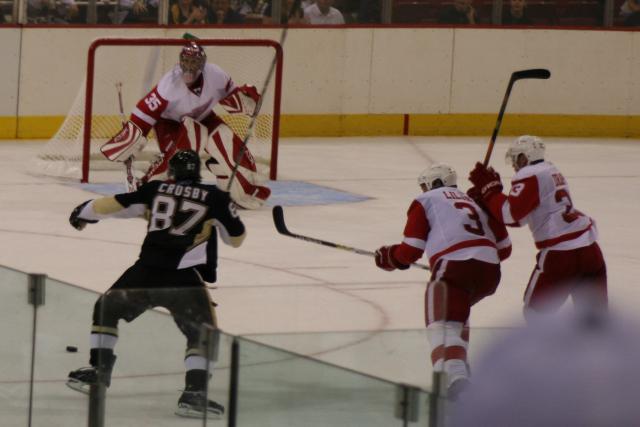
Technical Data: Canon EOS Digital Rebel XT, Canon EF 80-200mm f/4.5-5.6 II at 100mm, 1/320 sec at f/5. ISO 400. Cropped in post production. Mellon Arena, Pittsburgh, PA
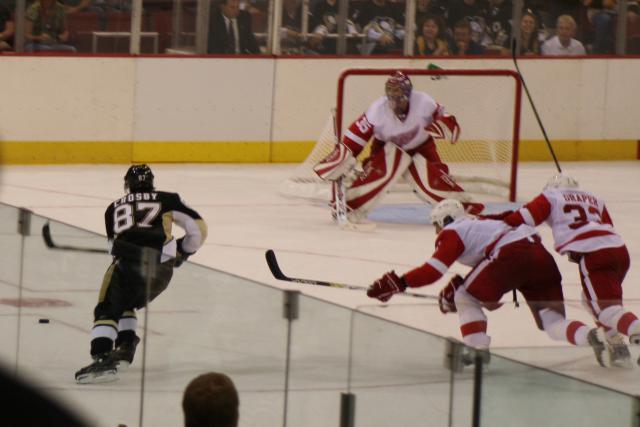
Technical Data: Canon EOS Digital Rebel XT, Canon EF 80-200mm f/4.5-5.6 II at 100mm, 1/200 sec at f/5. ISO 400. Cropped in post production. Mellon Arena, Pittsburgh, PA
If you mouseover the images, it should load the original, giving you an idea of how much the cropping cleaned up the final product. I probably could have used some effort to remove more distracting elements from the second and third images, but I was just doing a quick crop on these images.
So remember - even if you don't have that super-long telephoto, or you just want to leave your original composition a bit loose so you don't leave out important elements by cropping too closely on your actual shot - especially when shooting quick moving action, you can always go back later and crop things down a bit to get that close shot you're looking for.
Leave a comment and let me know what you think. What is your opinion of cropping in camera versus in post production.
Now, if you don't mind, I'm going to listen to the rest of the game... GO PENS!
- Bill
Landing Dragonflies
ktuli — Wed, 09/01/2010 - 19:34
So one of the shots I've been trying to capture for a while is a dragonfly in flight. As you might expect, it isn't exactly the easiest thing to manage.
The most important thing I've learned is to observe the dragonflies for a while - turn the camera off and just watch. Try and identify a pattern; often dragonflies will repeatedly return to a certain landing point or hover in the same spot. You need to identify those places and prepare for your shot from there. Once you identify a place, setup your camera and compose your shot - don't worry about trying to capture anything just yet. Pay attention to your background, make sure that you won't have something distracting that will ruin the shot if you do end up getting one. Now, moving around and setting up your camera and tripod may very well have spooked the dragonfly. So you'll likely have to wait a bit longer for it to calm down and return to its pattern, but more than likely it will, so just be patient (ie: don't go moving the camera and starting over!). Finally, use a remote shutter release and shoot without using the viewfinder, just fire off bursts when the dragonfly nears the spot you are composes on. And of course, you'll need a faster shutter speed, which probably means a wide aperture.
That all said, I still haven't gotten a perfect dragonfly in flight shot yet. There's always something just a little bit off...
Sometimes I'm too early...
Or too late...
And sometimes I get close, but the focus is not perfect and the shutter speed is a little too slow to freeze the motion of the wings...
And sometimes even a bit closer still - focus is better but continues to not be perfect, but the faster shutter froze the motion of the wings a little better...
So I'm stick with it and keep trying. There are a few more things I'll be keeping in mind next time I'm shooting for one of these. First, I'll try manually focusing on a spot and avoid using auto-focus. Also, I'll make sure I just default to the largest aperture right off the bat to speed up the shutter (and maybe go with a higher ISO). And if possible, I'll get the lighting a little better to brighten up the wings - in the last shot, since they're frozen, they almost disappear - having a bit of highlight lighting on them would help to accentuate the wings and avoid capturing a floating dragonfly body. Perhaps a flash unit would help, but so far I am still nervous about using flash.
It is a challenging shot, that's for sure, but then again - I am not stranger to elusive and challenging shots.
- Bill
PS: Here's the technical data for all of the shots above:
Technical Data: Canon EOS 7D, Sigma 150-500mm f/5-6.3 APO DG OS HSM at 500mm, 1/330 sec at f/9.9 (first three shots) and 1/1020 as f/6.4 (last shot). OS mode 1. ISO 200. Dolica AX620B100 tripod mounted. No post production. Raccoon Creek State Park, Beaver County, PA.
Vroom vroom! (part 4)
ktuli — Thu, 08/19/2010 - 17:11
Well, since this is still my favorite shot of the whole set, I figured I should give this one a bit more time...
Technical Data: Canon EOS 7D, Sigma 150-500mm f/5-6.3 APO DG OS HSM at 500mm, 1/510 sec at f/6.4. OS Mode 1. ISO 200. No post production. 2010 Pittsburgh Vintage Grand Prix Car Show, Pittsburgh, PA.
Why This Photo: Like I've said in the previous posts, I was out this day trying a new photography. At this point, I was standing at the top of a curvy hill and then a sharp right turn. I was working on tracking moving subjects.
What Works: I like the close zoom on this shot, capturing the look of concentration on the driver's face. The reflections and shine on the car, and the nicely blurred background. Like some of the other shots I shared previously, I think this one also captures a sense of the action of the race.
What Doesn't Work: There are basically two things I wish were different about this photo - first, I don't mind the car not being entirely in the shot, but I wish that at least a portion of the rear wheel was in the shot to give it a little balance (perhaps I should try cropping in from the right to remove the rear suspension). The second is that the depth of field is a bit shallow so that the driver's face is slightly blurred.
All-in-all, even with its flaws, this is still my favorite shot from this set. It doesn't come close to being a prize winning photo, but considering it has gotten me into thinking about other styles of photography, there's more value in it than just a single photo. But I still like it...
While we're at it, I guess I will share some of those other photos that I feel are a bit flat and lack that feel of action to them:
Feel free to comment on any or all of the shots today.
- Bill
Vroom vroom! (part 2)
ktuli — Tue, 08/17/2010 - 19:13
No - you're not seeing double.
I managed to capture these almost exactly identical images of two different racers, which is quite impressive (at least to me) when you consider that I was shooting handheld for a good portion of the day. The shots were taken only five seconds apart, but if you look very closely at the background, you'll see the shots are slightly different.
Normally, I would have recommended using a tripod shooting at such a long zoom length (439mm), but my Sigma 150-500mm f/5-6.3 APO DG OS HSM has that lovely little Optical Stabilization feature, so I was able to shoot by hand.
Technical Data: Canon EOS 7D, Sigma 150-500mm f/5-6.3 APO DG OS HSM at 439mm, 1/1020 and 1/790 sec (respectively) at f/6.4. ISO 200. No post production. 2010 Pittsburgh Vintage Grand Prix, Pittsburgh, PA.
I think I'll pass on doing my normal full critique of these two - mostly I'm just liking how cool these two photos turned out. Even though some of the cars are cut off in both photos, I still like the composition of the shots - I think it helps to give the sense of motion like the previous shot. Feel free to post your own critiques in the comments if you like.
Fun stuff.
- Bill
Vroom vroom! (part 1)
ktuli — Mon, 08/16/2010 - 20:04
Well, as promised, I've finally uploaded new photos after getting my home internet connection fixed (talk about a fiasco and a half!). I have some really good photos, but I am going to try and run through them in order.
Which takes us back about a month to the 2010 Pittsburgh Vintage Grand Prix. I posted a teaser back then, and I have a few more to share.
Technical Data: Canon EOS 7D, Sigma 150-500mm f/5-6.3 APO DG OS HSM at 370mm, 1/1020 sec at f/6.4. ISO 200. No post production. 2010 Pittsburgh Vintage Grand Prix, Pittsburgh, PA.
Why This Photo: I sometimes try my hand at new styles of photography. This is one of those times - just stepping out of my comfort zone.
What Works: The best thing about this photo is the lean that the racecar has from hitting this turn. I feel it gives the photo a sense of the action. Most of the other shots I took that day seem too static.
What Doesn't Work: I'm not thrilled with the shadow from the tree right in front of the car - it is a bit distracting. Focus might be a tad off too.
There's more from this set, so tune in again soon for more. In the meantime, drop me a line and let me know what you think of these car photos.
- Bill
And Now for Something Completely Different...
ktuli — Sun, 07/25/2010 - 13:56
As I'm sure you've discovered by now, my favorite type of photography is macro wildlife, but something I try from time to time is to step outside of my comfort zone. So this weekend, I did just that and tried something new...
Unfortunately, Verizon has been utterly useless in fixing an issue I've had with our DSL at home for over two weeks now. So until I get a real working internet connection at home, you'll have to wait to see more.
- Bill

